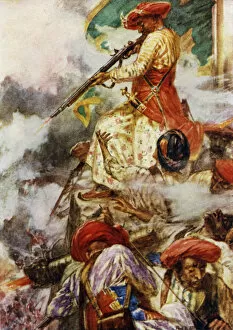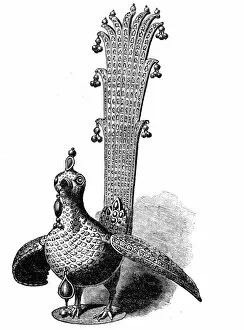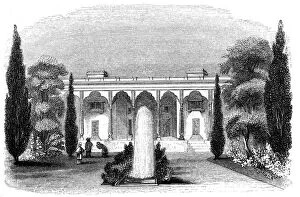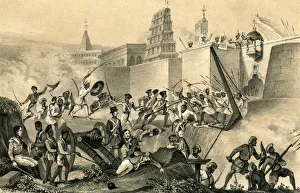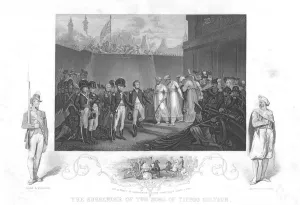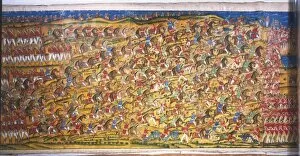Tippu Collection
Tippu Sultan, also known as Tippoo Saib, was a prominent figure in Indian history during the late 18th century
All Professionally Made to Order for Quick Shipping
Tippu Sultan, also known as Tippoo Saib, was a prominent figure in Indian history during the late 18th century. Born in 1749 or 1750, he was the eldest son of Hyder Ali, who served as the ruler of Mysore. Tippu Sultan played a significant role in several battles and left behind an enduring legacy. One notable event is the Battle of Pollilur that took place in 1781. This battle marked a turning point for Tippu Sultan's military career as he showcased his strategic brilliance and valor against British forces led by Sir Eyre Coote. Despite being outnumbered, Tippu himself stood firing coolly at his advancing foes, demonstrating his unwavering determination. The Gumbaz at Seringapatam stands today as a testament to Tippu Sultan's architectural prowess. This magnificent structure from the 19th century reflects his grandeur and artistic taste. It serves as a reminder of his reign and influence over South India. Intriguingly, after his death in 1799 during the Siege of Seringapatam, there were various discoveries related to him. The discovery of Tipu's body at the Water Gate added another layer to his historical significance. Paintings depicting this event capture its dramatic nature on paper. Tippo Saibs peacock is another fascinating aspect associated with him. Created by an unknown artist in 1844, it showcases Tippu Sultan's love for art and beauty through intricate details on this majestic bird. Even after centuries have passed since his rule ended, images like "Tippoo Saib" from around c1790 continue to captivate our imagination about this enigmatic leader who left an indelible mark on Indian history. Lord Cornwallis receiving the Sons of Tippoo Saib offers insight into diplomatic relations between colonial powers and local rulers during that era.







